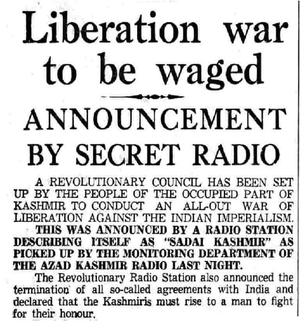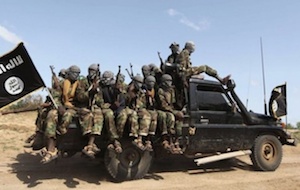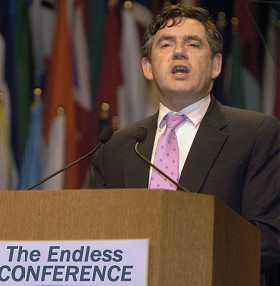Spot on analysis from @KyleWOrton 👇https://t.co/dsqUsjjWpi pic.twitter.com/4nww6gyget
— Wasiq Wasiq (@WasiqUK) July 7, 2022
| Long. The set-up: |
THE PAKISTAN DIMENSION OF 7/7
At 8:50 on 7 July 2005, Shehzad Tanweer (aged 22) detonated his boom jacket on a tube train, a minute later another suicide bomber, Mohammad Sidique Khan (30), detonated on a second train, and a minute after that another train was blown up by Germaine Lindsay (19). Thirty-nine people were massacred. At 9:47, a fourth suicide-killer, Hasib Hussain (18), went
kaboom!on a bus at Tavistock Square in Bloomsbury, slaughtering thirteen people.
The Security Service (MI5) confirmed that the killers had not been on their radar before the attacks, but once they were identified it became clear that Khan had been on the periphery of a prior investigation, Operation CREVICE, which in March 2004 had rolled up an al-Qaeda network in and around London that was planning to carry out a terrorist atrocity using a fertiliser bomb. Khan was found to have been in telephone contact with one of the conspirators, Omar Khyam, and both Khan and Tanweer had been briefly surveilled by the security services because of their contacts. After running various checks on Khan and Tanweer, it was determined that neither merited further resources: they seemed to be involved in minor fraud as part of financing the network, rather than having any involvement—and potentially not having any knowledge—of the terrorist planning that CREVICE was interested in.
Jonathan Evans, the head of MI5’s G-Branch dealing with international terrorism during this period and later the MI5 chief, noted later that the plot thwarted by CREVICE, led by Mohammed Qayum Khan, had been directed by al-Qaeda based in Pakistain’s tribal areas and involved "British citizens or British residents of Pak heritage, something which became something of a theme for this period". The 7/7 attack was in-keeping with this: all of its operatives (except Lindsay) were of Pak extraction, it originated in "plans from Pakistain", and indeed the logistics of the plot itself "did not fundamentally differ from all the other plans that failed to come to fruition" during the mid-2000s.
What only became clear after 7/7 was that in February 2004, Khyam had spoken in person to Sidique Khan in a car bugged by MI5, and from snippets of that conversation—and the testimony of a jihadist prisoner—British intelligence was able to work out, in retrospect, once they knew what they were looking for, that Khan and Tanweer had been to al-Qaeda training camps in Pakistain. It was a month after 7/7 when Pakistain handed over the photographs of Khan as he arrived there on 25 July 2003.
Pakistain’s reluctance to proactively assist—and its efforts to appear helpful in the aftermath—are hardly surprising. After tiring of the Mujahideen groups in the early 1990s, Pakistain’s Inter-Services Intelligence
...the Pak military
intelligenceagency that controls the military -- heads of ISI typically get promoted into the Chief of Army Staff position. It serves as a general command center for favored turban groups such as Lashkar-e-Taiba and Jaish-e-Mohammad, tries to influence the politix of neighboring countries, and carries out a (usually) low-level war against India in Kashmir...
(ISI) agency had turned to the Taliban
...mindless ferocity in a turban...
as its instrument to conquer Afghanistan, which was largely completed by 1996, and it was under the ISI’s close watch that the Taliban became entirely intermingled with al-Qaeda and its derivatives like "the Haqqani Network", as it did with the "Kashmiri" groups like Lashkar-e-Taiba
...the
Army of the Pure,an Ahl-e-Hadith terror organization founded by Hafiz Saeed. LeT masquerades behind the Jamaat-ud-Dawa facade within Pakistain and periodically blows things up and kills people in India. Despite the fact that it is
banned, always an interesting concept in Pakistain, the organization remains an blatant tool and perhaps an arm of the ISI...
(LeT). It is analytically quite misleading to treat as autonomous "groups" what is in reality a fluid single network that shares personnel, geography, resources (everything from training camps to ammunition), and ultimately a unified command structure running through the ISI headquarters at Abpara.
Khan’s story testifies to this. Khan had, as it turned out, previously travelled to Pakistain and trained in a jihadist camp in Kashmir
 ...a disputed territory lying between India and Pakistain. After partition, the Paks grabbed half of it and call it
...a disputed territory lying between India and Pakistain. After partition, the Paks grabbed half of it and call it Azad (Free) Kashmir. The remainder they refer to as "Indian Occupied Kashmir". They have fought four wars with India over it, the score currently 4-0 in New Delhi's favor. After 72 years of this nonsense, India cut the Gordian knot in 2019, removing the area's special status, breaking off Ladakh as a separate state, and allowing people from other areas to settle (or in the case of the Pandits, to resettle) there....
in July 2001, before being taken over the border to a Taliban camp near the frontlines with the final pocket of Afghan resistance, the Northern Alliance. al-Qaeda was woven into the fabric of this ISI-run jihadist infrastructure, designed significantly for an unending ideological war with India, that ran through—and now runs through again—Kashmir and Afghanistan, which simply shifts personnel from front to front as Pakistain desires. As well as the second trip to Pakistain by Khan in 2003, it transpired there had been a third trip, between November 2004 and February 2005, on which Tanweer had accompanied him. Whether Khan and Tanweer went into Afghanistan during this trip is unclear; they certainly made contact with al-Qaeda.
The ISI’s fingerprints had also been visible in the earlier plot that Operation CREVICE has dismantled. In court, Khyam said the ISI was threatening his family in Pakistain because "they are worried I might reveal more about them" and therefore he was "not going to discuss anything related to the ISI any more". It was pointed out to Khyam by the judge that "inferences" would be drawn from this; he understood that, but inferences had less repercussions for him than giving evidence about the role the ISI had played in facilitating a terrorist plot on British soil.
Britannia has a special place in this long-standing, transnational ISI jihadist network:
Masood Azhar
...One of the major players in Pak terrorism. In early 1994, India incarcerated him for his activities. In 1995, foreign tourists were kidnapped in Jammu and Kashmir. The kidnappers included his release among their demands. One of the hostages managed to escape but the rest were eventually killed. In 1999, he was freed by the Indian government in exchange for passengers on hijacked Indian Airlines Flight 814 that had been diverted to Kandahar. The hijackers were led by Masood Azhar's brother, Ibrahim Athar. Once he was handed over to the hijackers, they fled to Pak territory despite the fact that Islamabad had earlier stated that any of the hijackers would be jugged at the border. The Pak government had also previously indicated that Azhar would be allowed to return home since he did not face any charges there. Shortly after his release, he made a public address to an estimated 10,000 people in Karachi, firing up the rubes against America and India...
, an ISI operative and United Nations
...an organization originally established to war on dictatorships which was promptly infiltrated by dictatorships and is now held in thrall to dictatorships...
-listed terrorist, toured Britannia in 1993, fundraising and recruiting for the Kashmir jihad, while laying down local networks to continue the job. Some of these networks later defected to the Islamic State
...formerly ISIS or ISIL, depending on your preference. Before that they were al-Qaeda in Iraq, as shaped by Abu Musab Zarqawi. They're really very devout, committing every atrocity they can find in the Koran and inventing a few more. They fling
. Azhar had created a template for "Londonistan" in the 1990s, where jihadists set up shop in London to provide resources to insurgencies in the Moslem world. There was a de facto agreement with the British state that so long as this activity was directed abroad, the jihadists would not be interfered with.
...One of the major players in Pak terrorism. In early 1994, India incarcerated him for his activities. In 1995, foreign tourists were kidnapped in Jammu and Kashmir. The kidnappers included his release among their demands. One of the hostages managed to escape but the rest were eventually killed. In 1999, he was freed by the Indian government in exchange for passengers on hijacked Indian Airlines Flight 814 that had been diverted to Kandahar. The hijackers were led by Masood Azhar's brother, Ibrahim Athar. Once he was handed over to the hijackers, they fled to Pak territory despite the fact that Islamabad had earlier stated that any of the hijackers would be jugged at the border. The Pak government had also previously indicated that Azhar would be allowed to return home since he did not face any charges there. Shortly after his release, he made a public address to an estimated 10,000 people in Karachi, firing up the rubes against America and India...
, an ISI operative and United Nations
...an organization originally established to war on dictatorships which was promptly infiltrated by dictatorships and is now held in thrall to dictatorships...
-listed terrorist, toured Britannia in 1993, fundraising and recruiting for the Kashmir jihad, while laying down local networks to continue the job. Some of these networks later defected to the Islamic State
...formerly ISIS or ISIL, depending on your preference. Before that they were al-Qaeda in Iraq, as shaped by Abu Musab Zarqawi. They're really very devout, committing every atrocity they can find in the Koran and inventing a few more. They fling
Allaharound with every other sentence, but to hear western pols talk they're not
reallyMoslems....
. Azhar had created a template for "Londonistan" in the 1990s, where jihadists set up shop in London to provide resources to insurgencies in the Moslem world. There was a de facto agreement with the British state that so long as this activity was directed abroad, the jihadists would not be interfered with.
What happened on 7/7 was a demonstration that this jihadist network ran two ways: what had been exported could come home. The realisation was slow in coming. In September 2005, al-Qaeda released a video to al-Jazeera of Khan’s last testament declaring his "war" on the West and praising "today’s heroes": the late Osama bin Laden
...... who used to be alive but now he's not......
, al-Qaeda’s then-deputy (now emir) Ayman al-Zawahiri
...Formerly second in command of al-Qaeda, now the head cheese, occasionally described as
the real brains of the outfit.Formerly the Mister Big of Egyptian Islamic Jihad. Bumped off Abdullah Azzam with a car boom in the course of one of their little disputes. Is thought to have composed bin Laden's fatwa entitled World Islamic Front Against Jews and Crusaders. Currently residing in the North Wazoo area assuming he's not dead like Mullah Omar. He lost major face when he ordered the nascent Islamic State to cease and desist and merge with the orthodox al-Qaeda spring, al-Nusra...
, and the founder of the Islamic State movement, which was at that time part of al-Qaeda, Abu Musab al-Zarqawi, the Jordanian whose real name was Ahmad al-Khalayleh.
| And the dismount: |
Which returns us to the issue of Pakistani blackmail. Now that NATO is out of Afghanistan, with Western intelligence effectively blind, if and when a British citizen goes rogue, in or from Pakistan, the ISI will be there to offer a helping hand in finding them—for a price. And if Britain accepted the apparent necessity of cooperation with the ISI at a time when the ISI was killing British troops, it is unlikely this will change now. The mind-bending logic of relying on the organisation that nurtures the terrorist groups that threaten Britain will win out by bureaucratic exigency and inertia; what that ensnares Britain into giving away—whether in money or political concessions—will only become clear over time.

 [AnNahar] British police said Tuesday they were investigating a report that two teenagers, who come from the same town as one of the 2005 London
[AnNahar] British police said Tuesday they were investigating a report that two teenagers, who come from the same town as one of the 2005 London  Pervez
Pervez  A leading opponent of plans to build Europe's largest mosque in east London has seen a chilling "obituary" for him posted on the internet.
A leading opponent of plans to build Europe's largest mosque in east London has seen a chilling "obituary" for him posted on the internet.  British Prime Minister Gordon Brown is considering introducing restrictions on offenders travelling to Pakistan and other countries in an attempt to stop radical Muslims going abroad for training by terror groups, the Guardian reported on Thursday.
British Prime Minister Gordon Brown is considering introducing restrictions on offenders travelling to Pakistan and other countries in an attempt to stop radical Muslims going abroad for training by terror groups, the Guardian reported on Thursday. Its the capitals fastest growing religion, based on noble traditions and compassionate principles, yet Islam can still be tainted by mistrust and misunderstanding. Here Time Out argues that an Islamic London would be a better place
Its the capitals fastest growing religion, based on noble traditions and compassionate principles, yet Islam can still be tainted by mistrust and misunderstanding. Here Time Out argues that an Islamic London would be a better place